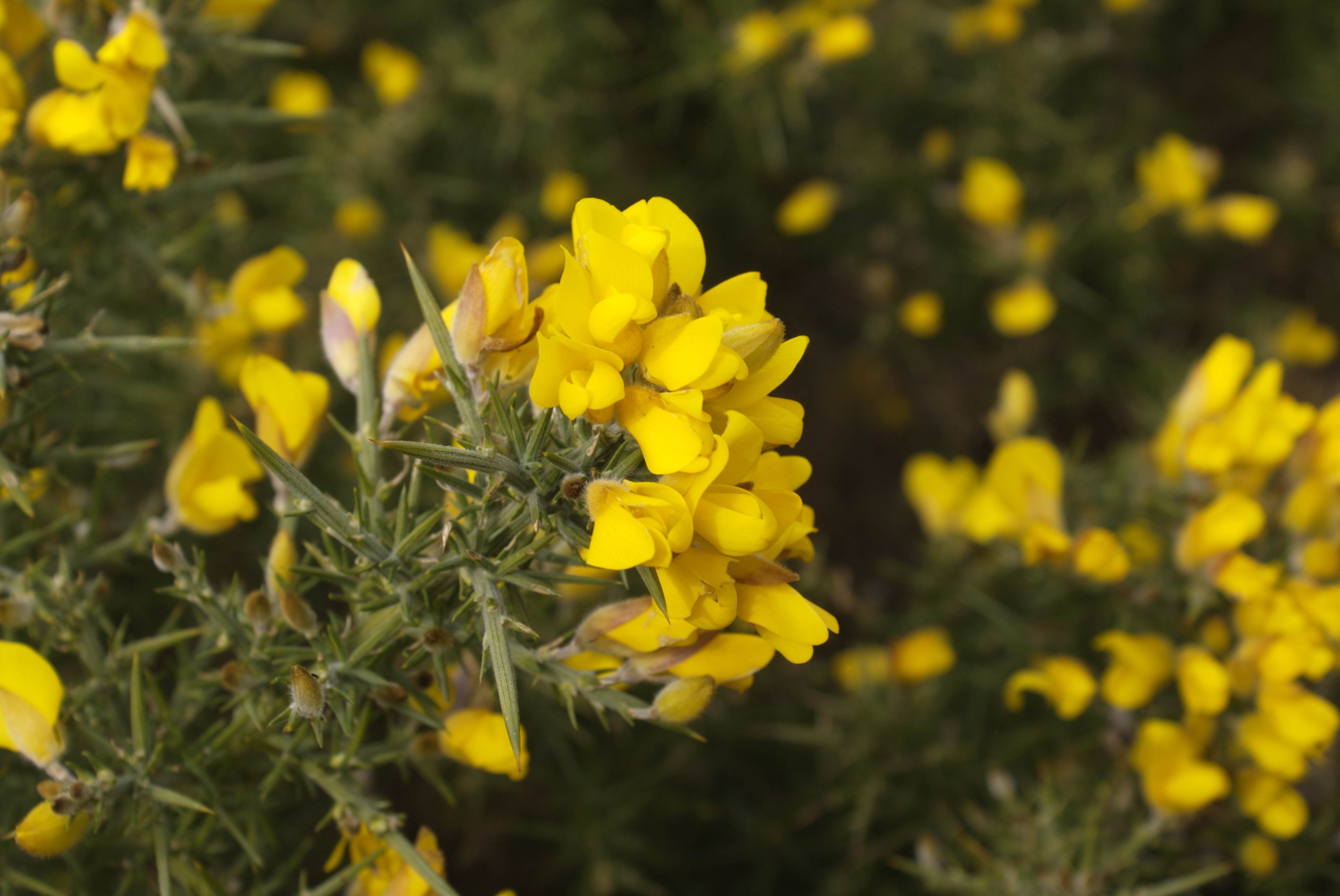Ulex europaeus (gorse, common gorse, furze or whin) is a species offlowering plant in the family Fabaceae, native to portions of Europe from the northern United Kingdom south to Galicia in Spain and Portugal, and from the western Republic of Ireland east to Galicja in Poland and Ukraine. (https://en.wikipedia.org/wiki/Ulex_europaeus)
 |
| https://upload.wikimedia.org/wikipedia/commons/c/cd/Gorse-Ulex_europaeus.jpg |
Ulex europaeus is a deciduous Shrub growing to 1.5 m (5ft) by 1.5 m (5ft) at a fast rate. It is hardy to zone (UK) 6 and is not frost tender. It is in leaf 12-Jan It is in flower from Jan to December, and the seeds ripen from Jan to December. The flowers are hermaphrodite (have both male and female organs) and are pollinated by Bees, flies, beetles.It can fix Nitrogen. (http://www.pfaf.org/user/Plant.aspx?LatinName=Ulex+europaeus)
Ulex (gorse, furze or whin) is a genus of flowering plants in the family Fabaceae. The genus comprises about 20 species of thorny evergreen shrubs in the subfamily Faboideae of the pea family Fabaceae. The species are native to parts of western Europe and northwest Africa, with the majority of species in Iberia. (https://en.wikipedia.org/wiki/Ulex)
Gorse cordial. How did it taste? I took it to work to get opinions and got lots of "mangoes", "cut grass", "spring" and "herby notes". The flavour, while subtle, was quite distinctive. (http://curiouskai.blogspot.hu/2010/09/gorseflower-cordial.html)
Gorse wine. The smell from a gorse bush in spring sunshine is extraordinary and one can be overwhelmed by the smell of the coconut-scented flowers. But it's coconut with a slight difference. Perhaps a little more like a vanilla joss-stick or one of those particularly virulent vanilla-scented car air-fresheners. Nevertheless, gorse blossom makes one of the best country wines and is not to be missed. The coconut flavour survives the brewing process reasonably intact and the wine as a whole is full-bodied and as rich as Croesus. (http://www.theguardian.com/lifeandstyle/wordofmouth/2012/mar/14/how-to-make-gorse-wine)
Dying with gorse. "the palest shade is the original colour, in reality more lemon like, the deeper shades are results of using a bit of washing soda for different lenghts of time at the end of the dyeing process." (https://red2white.wordpress.com/2009/05/02/natural-dyeing/)
 |
| https://red2white.files.wordpress.com/2009/05/gorse-merino-b.jpg?w=700 |
Gorse beer in chardonnay barrels. "we filled into some amazingly fresh Chardonnay wine barrels. These were tucked away and stored for a full 14 months to allow the flavours to marry and intertwine. The resulting beer has a beautiful oak note to it like a finely aged wine with the coconut flavours of the gorse flowers complementing the Chardonnay undertones." (https://www.cromartybrewing.com/blog/wild-bush)
Nincsenek megjegyzések:
Megjegyzés küldése